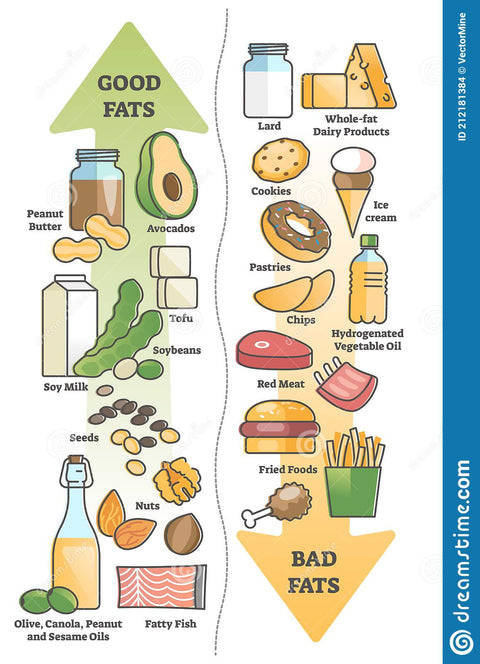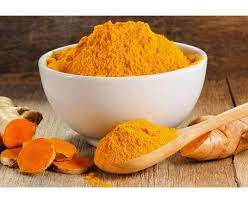Fat is a very small word but it has a lot of meaning. In some cultures fat is associated with good health and prosperity while in others it is associated with greed and sickness. Like many things, there are some fats that are considered good and some that are considered bad or unhealthy. Unsaturated fats are often considered good (vegetables, nuts, seeds and the oils derived from these contain predominately this type) whilst saturated fats are often considered bad (animal products like butter, cheese or pork scratchings and coconut oil contain predominately this type). Notice that unsaturated fats are liquid at room temperature whilst saturated ones are solid.
The difference between these types is that the unsaturated fats have a double bond in their carbon chain whilst saturated fats have only single bonds and thus have more hydrogen bonded to the carbon (they are saturated with hydrogen). Transfats are a third category and are often considered the least healthy. They are created when unsaturated fat oils are hydrogenised (extra hydrogen atoms are bonded), this can occur natural or artificially. They occur natural in some meat and dairy products and are artificially present in margarine and any other product with a partially hydrogenated vegetable oil, the process turned a liquid oil into a solid.
Unsaturated fats can help to build and repair cell walls. Extra Virgin Olive Oil or cold pressed olive oil is classed as an unsaturated fat. While saturated fats can increase LDL cholesterol which may lead to deposits on the walls of arteries and veins, potentially leading to a heart attack or stroke.
Essential fats are ones which the body can’t produce itself, they include linoleic acid (LA), an omega-6 fatty acid, and alpha-linolenic acid (ALA), an omega-3 fatty acid. Sources of omega 3’s include: flaxseed oil, chia seeds, walnuts and their oil, flaxseeds, canola, soybean and mustard oils and tofu. Also many types of fish and fish oils. Sources of omega 6 include: chia seeds, walnuts, hazlenuts, almonds and brazil nuts, canola, soybean, corn, sunflower and safflower oils.
Twin studies have estimated that the variation in anthropometry (the scientific study of the measurements and proportions of the human body) is about 60-70% a result of our genetics, with the rest being explained by our diet, exercise and other ‘environmental factors’. So, in conclusion eating well and exercising is very important but the main influence on our bodies shape and make up is usually genetic.
''For the millions of years of our evolution, there wasn't much food around, so our bodies are designed to keep from losing weight. When we start to lose weight, our metabolism slows and our appetite increases -- we burn less and we want more.''
Dr. Fitzgibbon at Northwestern University








Comments (0)
There are no comments for this article. Be the first one to leave a message!